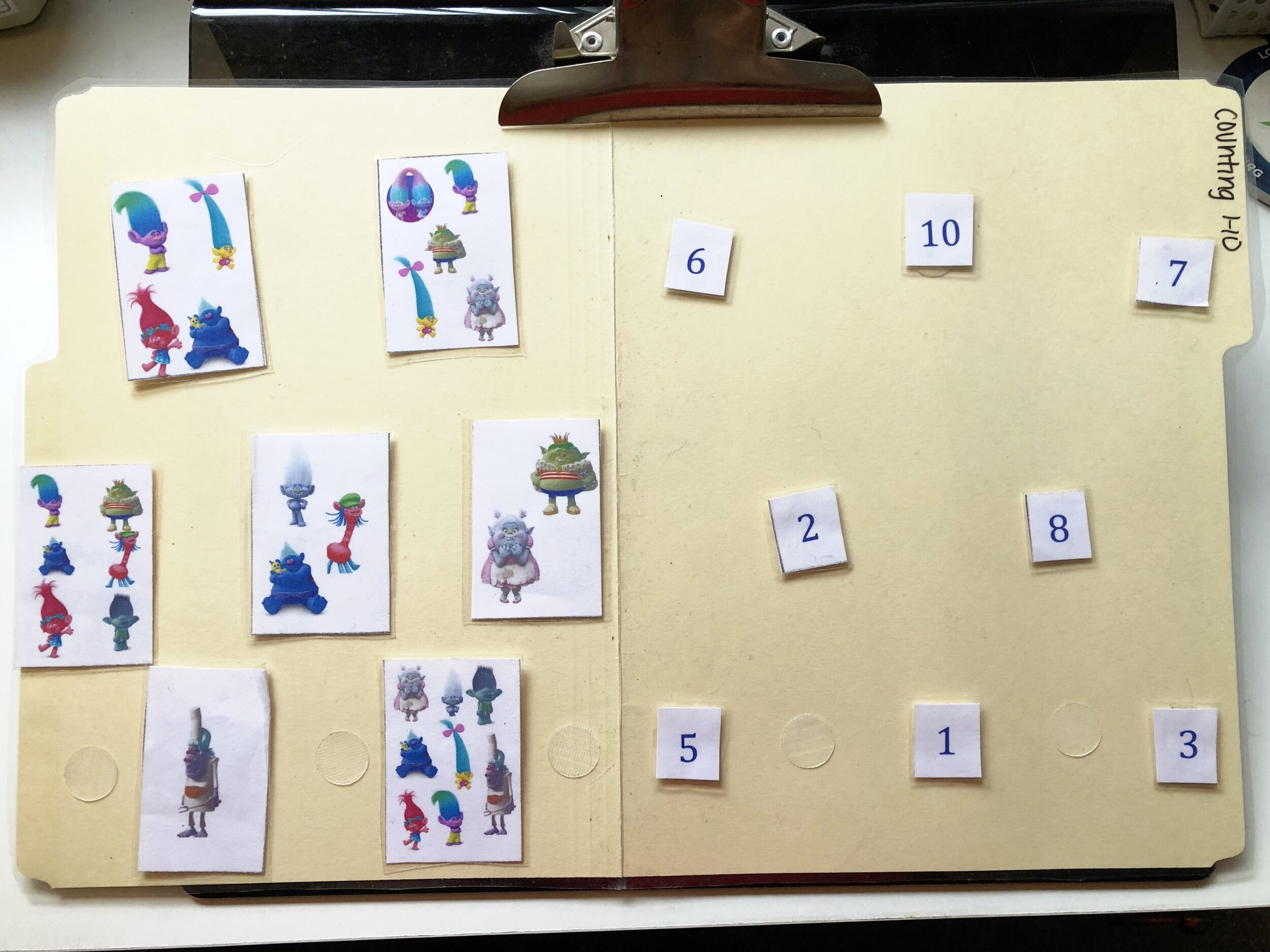So often, we are asked questions like “Why is it so much harder to teach math than reading?”. Math is a very abstract subject. During reading activities, students are constantly relating real life experiences to the text, but with math it’s a little more difficult. So how do we get students engaged in math?
Tailor the Activity to the Child’s Individual Interests
Counting can be extremely redundant! It is difficult to sustain a child’s attention when they are not interested in the activity. Who really wants to stare at numbers all day?! Not me! Something as simple as incorporating numbers into the child’s interests can make all the difference!
Counting trucks, police cars, etc.
Using Trolls characters to help with counting.
Use Food
We all know there is nothing more motivating to kids than food! As Special Education Teachers, we are constantly trying to find interests and activities that entice kids as much as those M&M’s and Goldfish do! Bringing food into lessons can be tricky, and is at the discretion of the teacher, school, parents, etc. I have found that even if actual food isn’t present, using visuals and a big imagination can go a long way!
Use Blocks Outside of “Math Block” to Teach Counting
Sometimes teaching counting and numbers is most effective outside of the your designated “math block”.
Morning Meeting & Calendar Block:
Count the number of students who are there each day
Count how many desks are empty
Count the date (pointers go a long way!)
Graph & count the weather
Snack Time:
Have students pass out snack bags, place mats, silverware, etc. while counting out loud.
Have students count out how much of each snack they have (ie. Pretzels, goldish, etc)
Structured Play:
How many toys do we have out?
How many animals do you see?
Classroom Incentives:
Count money, marbles, dojo points, etc. for classroom incentives
…the list goes on!
Use Manipulatives
Manipulatives are a great way to engage students during math. Counting collections can look so many ways! It does not matter what is in each collection. Counting collections provide a concrete way to manipulate, touch and see the groups you are counting.
Examples of items to put in counting collections can include:
Beans, Bears, Blocks, Sticks, Marbles, Pencils, Cubes, Legos, etc.
Multi Sensory Activities
Bringing numbers and objects into sensory activities is a great way to work with numbers using a multi sensory approach. Typically, I would try to follow the theme (ie. animals, family, food, etc.)
Fine motor activities:
Kinectic Sand
Water Tables
Play doh Mats
These counting strategies can also be used for older students’ as well! All you have to do is make sure the manipulative’s reflect the students’ interests and age, and it makes counting that much more engaging and fun!





